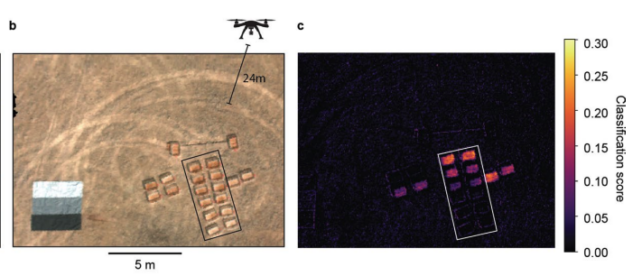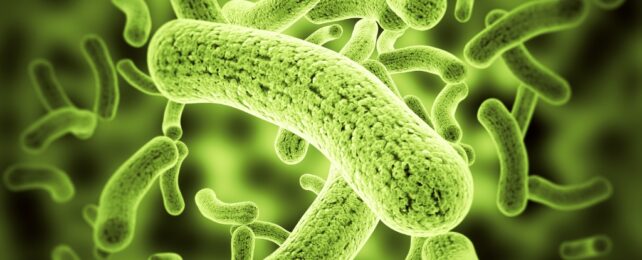Checking the health of soil could soon be as simple as asking the local bacteria. Drones or satellites could detect their answers, given as different-colored glows in response to triggers like nutrients or contaminants.
Since they can be easily edited to produce molecules when certain conditions are met, bacteria are already widely used as sensors. But checking their responses usually requires a microscope and time.
That might soon be achieved by snapping photos with a drone and waiting 30 seconds, as researchers at MIT have designed a sensor system where bacteria glow in certain wavelengths of light when they detect a target.
The system seems versatile enough to detect basically any molecule, chemical or bacteria, good or bad. By adding two different bacteria, it could, in effect, make fields glow red when pollutants take hold and green when nutrients are high.
"So, it might respond to metals or radiation or toxins in the soil, or nutrients in the soil, or whatever it is you want it to respond to," says Christopher Voigt, biological engineer at MIT.
"Then the output of that would be the production of this molecule that can then be sensed from far away."
The team used special cameras mounted on drones or buildings to scan soil samples patrolled by genetically engineered bacteria. Samples containing the target were clearly visible, emitting a signal up to 12 times stronger than control samples, from up to 90 meters (295 feet) away.
The glow wouldn't be visible to the naked eye – it works using hyperspectral cameras. These devices can detect hundreds of wavelengths of visible and infrared light, and analyze how much of each is present in every pixel of an image. That means they can pick up tiny color changes that would be imperceptible to other instruments, let alone the human eye.
The team engineered bacteria to produce 'reporter' molecules that can be picked up by these hyperspectral cameras. They started by running quantum mechanical simulations of 20,170 metabolites, to find the most suitable candidates.
"The best hyperspectral reporters (HSRs) are those whose spectra are the most unique and require the smallest number of enzymes to produce," the authors write in their paper describing the work.
Eventually they settled on two promising candidates: a pigment called biliverdin, which can give bruises a green tinge, and a bacteriochlorophyll, which microbes use for photosynthesis. The enzymes to create biliverdin were engineered into a soil bacterium called Pseudomonas putida, while an aquatic microbe called Rubrivivax gelatinosus gained the ability to produce bacteriochlorophyll.
These outputs were hooked up to sensor circuits in the bacterial genomes – in this case, to detect other bacteria lurking nearby. But in essence, the trigger can be almost anything, including chemicals in contaminated soil.
"The nice thing about this technology is that you can plug and play whichever sensor you want," says Yonatan Chemla, environmental microbiome engineer at MIT. "There is no reason that any sensor would not be compatible with this technology."

To test the idea, the team placed samples of soil or sand in boxes open to the air, some of which contained buried discs of the target. Hyperspectral cameras on drones or rooftops could take images covering hundreds or thousands of square meters, in under 30 seconds.
And sure enough, boxes containing the targets glowed strongly, in stark contrast to the control samples.
The researchers disclose funding from the US Department of Defense and the Ministry of Defense of Israel.
"We've been very busy in the past three years working to understand what are the regulatory landscapes and what are the safety concerns, what are the risks, what are the benefits of this kind of technology?" Chemla says.
While the safety and regulations of these systems still need to be figured out, the team says that the method shows promise for ongoing environmental monitoring.
"Microbial sentinels have advantages as in-field sensors. They can be spread over wide areas and respond to unique signals and are persistent without the need for electrical power," the authors write.
"Further, HSRs can be imaged during the daytime under ambient conditions and identified in spectrally complex environments, including open ground, greenery, and urban structures."
The research was published in the journal Nature Biotechnology.
